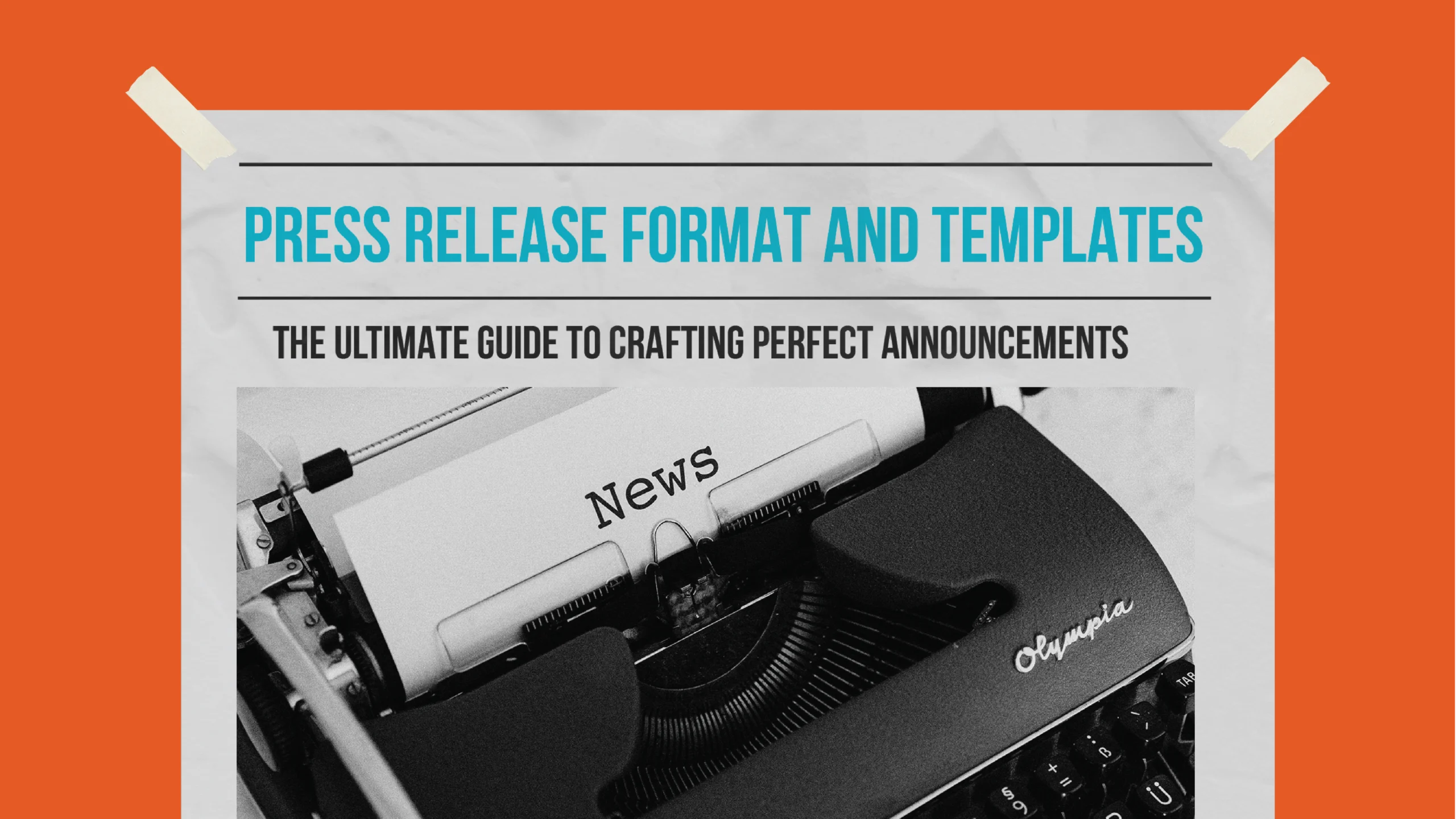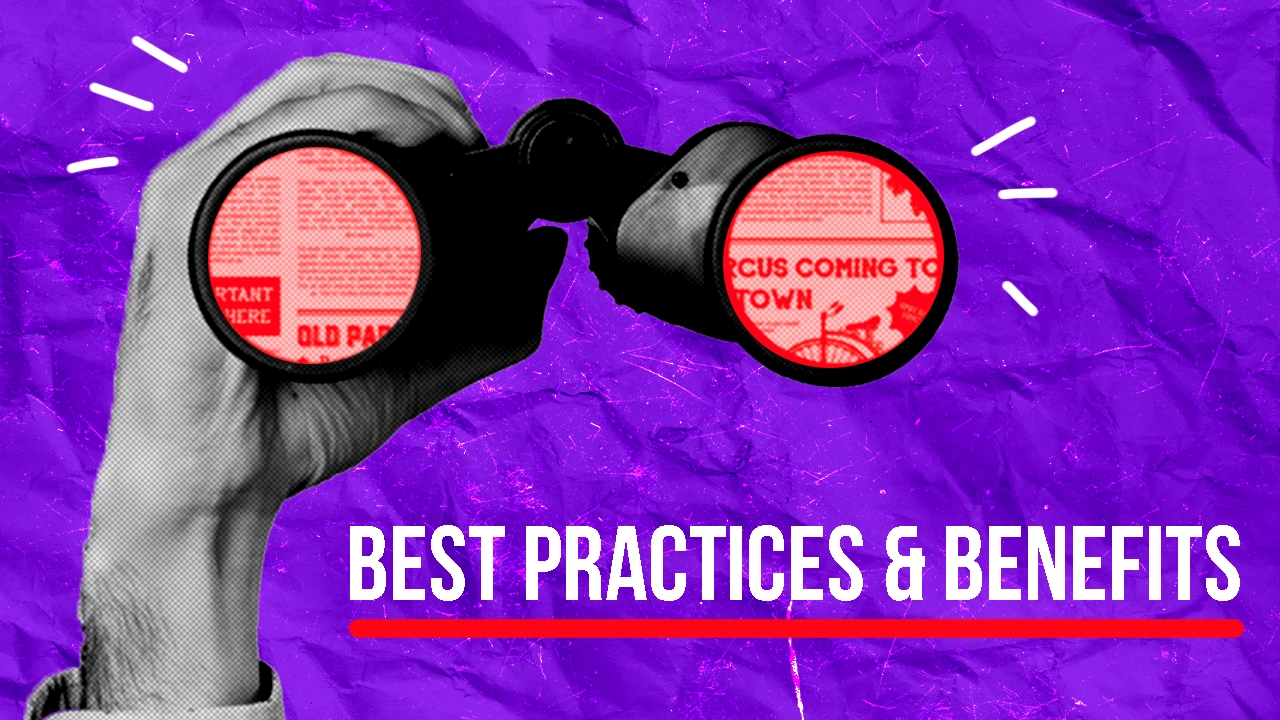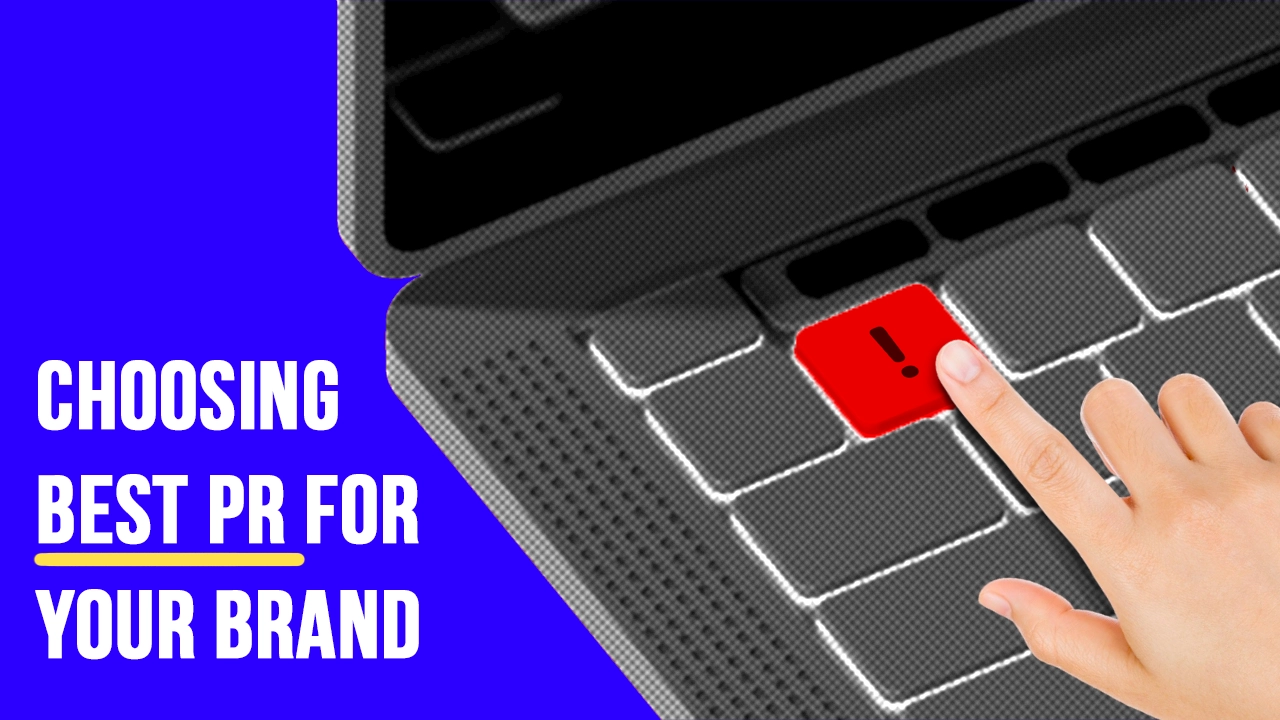In the fast-paced digital era, where information is consumed in seconds, crafting a professional press release has never been more important. Press releases are a tried-and-true method to share newsworthy information with the public, media outlets, and stakeholders. They play a pivotal role in spreading the word about product launches, company milestones, partnerships, or charitable initiatives.
This guide provides a comprehensive overview of press release formats, templates, and industry-specific tips, helping you write compelling and impactful releases that stand out. With expert advice and free downloadable templates, you’ll leave with all the tools necessary to create polished press releases that generate attention and results.
Why Press Releases Matter in the Digital Age
A press release is more than just a document—it’s a communication tool that bridges the gap between your organization and the media. With digital platforms like websites, blogs, and social media becoming major content hubs, press releases now reach audiences directly, bypassing traditional media gatekeepers.
Key Benefits of a Press Release in 2024:
- Amplifies Brand Visibility: Distributes your message across platforms, boosting your reach.
- Improves SEO: Strategically optimized press releases can enhance search engine visibility.
- Strengthens Credibility: Demonstrates professionalism and transparency.
- Generates Leads and Sales: Well-crafted press releases drive traffic, interest, and conversions.
Table of Contents

What is a Press Release?
A press release is an official, structured document issued by an organization to announce important news to the media or public. Press releases aim to inform, promote, and engage, leveraging the power of storytelling to capture attention.
Modern Applications:
Today, press releases are distributed not only to journalists but also directly to online audiences via company blogs, newsletters, and social media. Businesses now use press releases as part of broader content marketing strategies.
Who Needs a Press Release?
Press releases are versatile tools, useful across industries and objectives. Below are examples of who benefits most:
1. Businesses
- Announcing product launches, partnerships, or awards.
- Sharing financial reports, expansions, or acquisitions.
- Highlighting corporate social responsibility efforts.
2. Nonprofits
- Promoting fundraising campaigns or initiatives.
- Showcasing success stories or impacts.
- Announcing community events.
3. Technology Companies
- Launching innovative products or updates.
- Announcing funding rounds or partnerships.
- Highlighting groundbreaking advancements.
4. Entertainment and Lifestyle Brands
- Promoting new projects, events, or products.
- Sharing celebrity endorsements.
- Announcing major milestones or collaborations.
Ready to Elevate Your Startup’s Story?
Visit GlobalWavePR today to learn more about our services and how we can help your startup achieve its goals. Let’s turn your next press release into a success story!

Enhanced Standard Press Release Format
A well-structured press release not only grabs attention but also improves the likelihood of being picked up by media outlets and search engines. Below, we outline the enhanced format with detailed insights.
1. Headline: Capturing Attention with Precision
Your headline is the first impression and arguably the most critical element of your press release. It determines whether your release will be read or ignored.
Best Practices for Crafting Headlines:
- Be Clear and Concise: Use 10–12 words that summarize the core announcement.
- Incorporate Keywords: Optimize for SEO by including relevant search terms.
- Focus on Value: Highlight the unique angle or benefit of your news.
- Use Actionable Language: Start with strong verbs for more impact.
Examples:
- “EcoTech Secures $10M to Advance Sustainable Energy Solutions”
- “XYZ Company Expands Global Operations with Strategic Merger”
Tip: If your press release targets different media outlets or audiences, create multiple versions of your headline to suit their preferences.
2. Subheadline: Adding Context
The subheadline provides additional details to complement the main headline. It gives readers a sneak peek into the release, helping them decide if it’s worth their time.
Subheadline Writing Tips:
- Expand on the headline with specifics or a supporting statistic.
- Focus on what’s new or unique about your announcement.
- Limit it to one or two sentences.
Examples:
- “Funding to Accelerate the Development of AI for Early Cancer Detection”
- “The Merger Will Expand XYZ’s Market Share Across Europe and Asia”
3. Dateline: Establishing Timeliness
The dateline sets the context for timing and location. This is particularly important for journalists and news outlets that prioritize relevance.
Components of a Dateline:
- City of Origin: Where the news originates.
- Date of Release: When the press release is being distributed.
Format Example:
“New York, NY – December 5, 2024”
4. Lead Paragraph: The 5 Ws in One Shot
The lead paragraph is your chance to hook the reader. It should answer the essential 5 Ws—Who, What, Where, When, and Why—while emphasizing the significance of the announcement.
How to Write a Strong Lead:
- Start with the most newsworthy element of your story.
- Use specifics—avoid vague or generic statements.
- Include keywords naturally for SEO.
- Convey the value proposition in one or two sentences.
Example:
“EcoTech, a leader in renewable energy, has unveiled a groundbreaking solar panel technology that reduces household energy costs by 20%. The new panels, launching in early 2025, aim to make clean energy more accessible to homeowners worldwide.”
5. Supporting Paragraphs: Adding Depth
The body of the press release builds on the lead, providing more detail and context. This is where you can elaborate on the announcement with supporting data, quotes, and background information.
What to Include:
- Supporting Facts: Add statistics, figures, or relevant data to back up your claims.
- Quotes: Include statements from executives, partners, or experts to add credibility and a human touch.
- Details: Explain the “why” and “how” behind the announcement.
Example Body Paragraph:
“According to recent studies, global energy consumption is expected to increase by 25% over the next decade. ‘Our new solar panels are designed not just to meet this demand but to make sustainable energy solutions affordable for everyone,’ said Jane Smith, CEO of EcoTech. ‘This innovation aligns with our mission to combat climate change through cutting-edge technology.’”
Tip: Use bullet points to highlight key features or benefits for better readability.
6. Boilerplate: Building Authority
The boilerplate is a brief section that provides background information about your organization. Think of it as your company’s mini bio.
Boilerplate Writing Tips:
- Keep it short (50–100 words) and focus on key facts.
- Include your company’s mission, history, and expertise.
- Use this section consistently across all press releases.
Example Boilerplate:
“Founded in 2010, EcoTech is a global leader in renewable energy solutions. The company develops innovative technologies that empower individuals and businesses to adopt sustainable practices. With over 1 million installations worldwide, EcoTech is committed to driving the transition to a cleaner future.”
7. Call-to-Action (CTA): Driving Engagement
Your press release should end with a clear CTA, guiding readers on what to do next. Whether you want them to visit a website, register for an event, or contact your team, make the next step obvious.
Examples of Effective CTAs:
- “For more information, visit [YourWebsite.com].”
- “Download the full report at [Link].”
- “Contact our media team at [Email Address] to schedule an interview.”
8. Contact Information: Simplifying Follow-Ups
Make it easy for journalists, media outlets, or interested parties to reach out by including clear contact details.
What to Include:
- Name of the press contact.
- Direct phone number and email address.
- Optional: Social media handles or links to media kits.
Example:
For Media Inquiries:
John Doe, Media Relations Specialist
Phone: (123) 456-7890
Email: john.doe@ecotech.com
9. Multimedia Integration: Visuals Matter
Modern press releases are enhanced with visuals like photos, videos, infographics, or charts. Multimedia elements not only make your release more engaging but also increase its chances of being shared on social media.
Multimedia Tips:
- Include a featured image relevant to your announcement.
- Add charts or graphs for data-driven stories.
- Use high-quality visuals with captions.
Example Visuals to Include:
- A product photo for a launch announcement.
- An infographic summarizing key statistics.
- A video clip of the event or product demo.
10. Closing: Summarize with Impact
The closing paragraph wraps up the press release, often reiterating the significance of the announcement. This is your chance to leave a lasting impression.
Closing Example:
“EcoTech’s latest innovation marks a significant step forward in the global transition to renewable energy. With its user-friendly design and affordability, the new solar panel technology is set to empower millions to embrace sustainability.”
Pro Tips for Optimizing the Format
- Use an Inverted Pyramid Style: Lead with the most important information and gradually add details.
- Keep Sentences and Paragraphs Short: Aim for clarity and readability.
- Leverage Keywords Strategically: Don’t overstuff; ensure keywords fit naturally.
- Use Hyperlinks Sparingly: Include links to your website, product pages, or resources without overloading.
- Add a Notes Section (Optional): For embargo dates or additional details journalists might need.

The Importance of Proper Press Release Formatting
Proper formatting is crucial to the success of a press release. It determines how your message is received by journalists, search engines, and your target audience. A well-formatted press release conveys professionalism, increases readability, and ensures your announcement gets the attention it deserves.
Here’s why press release formatting is a key factor in effective communication:
1. Creates a Strong First Impression
Journalists and media outlets often receive hundreds of press releases daily. A clean, professional format immediately sets yours apart from the clutter. Poorly structured releases are often ignored, regardless of how newsworthy the content might be.
Why it Matters:
- An organized format demonstrates credibility and professionalism.
- It makes your press release more approachable and easier to navigate.
Quick Tip: Use consistent formatting for all your press releases to establish a recognizable brand identity.
2. Enhances Readability
Journalists and readers don’t have time to dig through paragraphs of unstructured text. A properly formatted press release makes it easy to find and understand the most critical information quickly.
Key Formatting Techniques for Readability:
- Use Headings and Subheadings: Break your press release into sections for clarity.
- Keep Paragraphs Short: Aim for 2–3 sentences per paragraph.
- Leverage Bullet Points: Use them to list features, benefits, or data points.
- Use Visual Hierarchy: Bold headlines, italicize quotes, and emphasize key points.
Example:
Instead of writing:
“The new product is expected to increase efficiency in the workplace and reduce costs for businesses, providing a reliable solution for office automation.”
Format it as:
- Key Benefit #1: Increases workplace efficiency.
- Key Benefit #2: Reduces operational costs.
- Key Benefit #3: Provides reliable office automation.
3. Improves SEO Performance
In the digital age, press releases serve a dual purpose: to inform the media and to boost your online presence. A well-formatted release optimized for search engines can significantly improve your visibility and drive traffic to your website.
SEO Formatting Essentials:
- Incorporate Keywords: Naturally weave keywords into the headline, subheadings, and body.
- Use Internal Links: Link to relevant pages on your website for more information.
- Optimize Images: Include alt text for any visuals in your press release.
- Keep the URL Clean: Ensure URLs linked in your press release are short and descriptive.
SEO Impact Example:
A press release announcing a new AI product should include keywords like “AI technology,” “artificial intelligence,” and “innovative AI tools” strategically within the content.
4. Increases Engagement Through Visuals
A plain-text press release may convey the message, but incorporating multimedia makes it memorable. Adding visuals like high-quality images, videos, or infographics not only enhances the format but also boosts engagement, especially on social media platforms.
Visual Formatting Tips:
- Add a feature image related to the announcement (e.g., product photos, event snapshots).
- Use infographics to summarize data or key findings.
- Include captioned videos for announcements like product demos or event recaps.
Pro Tip: Ensure all visuals are optimized for web use to avoid slowing down page loading times.
5. Ensures Compliance with Industry Standards
A poorly formatted press release risks being overlooked by journalists simply because it doesn’t adhere to industry expectations. Following established formatting guidelines ensures your release aligns with what media professionals expect.
Standard Expectations Include:
- A clear headline and subheadline.
- A concise dateline with the release date and city of origin.
- A structured body with quotations and supporting details.
- Properly formatted boilerplate and contact information.
6. Improves Conversion Rates
A press release isn’t just about delivering news—it’s also about encouraging the audience to take action. Proper formatting, especially with a clear call-to-action (CTA), ensures readers know exactly what to do next.
Effective CTA Examples:
- “Visit [Your Website] to learn more about our new product.”
- “Register for our webinar at [Event Link].”
- “Contact [Name/Email] to schedule an interview or demo.”
How Formatting Helps:
Placing the CTA in bold text or in a dedicated section increases its visibility and effectiveness.
7. Builds Trust and Credibility
Media professionals are more likely to engage with organizations that present themselves as professional and trustworthy. A properly formatted press release communicates that you’re serious about your announcement and understand media protocols.
Trust-Building Formatting Tactics:
- Include accurate contact details for easy follow-up.
- Use consistent branding (logos, fonts, and tone of voice).
- Ensure your release is free from typos and grammatical errors.
Quick Checklist for Proper Press Release Formatting
Before hitting send, ensure your press release meets these criteria:
- Headline: Clear, concise, and engaging with keywords.
- Subheadline (if applicable): Adds context or unique details.
- Dateline: Includes city and release date.
- Lead Paragraph: Covers the 5 Ws (Who, What, Where, When, Why).
- Body Paragraphs: Organized, with supporting data and quotes.
- CTA: Clear next steps for readers.
- Contact Information: Accurate and easily accessible.
- Multimedia: High-quality images or videos included.
How GlobalWavePR Can Replicate These Successes for Your Startup
At GlobalWavePR, we specialize in crafting and distributing press releases that deliver measurable results. Whether you’re looking to secure funding, build investor confidence, or create buzz for a product launch, our team of experts is here to help.
Why Choose GlobalWavePR?
- Expertly Written Content: Our press releases are tailored to resonate with investors, media, and customers.
- Broad Distribution Network: Reach the right audience through our extensive network of journalists, newswire services, and digital channels.
- SEO-Optimized Releases: We ensure your press releases are designed to rank highly on search engines, increasing online visibility.
- Startup-Centric Approach: We understand the unique challenges startups face and develop strategies to help you stand out.
Ready to Elevate Your Startup’s Story?
Visit GlobalWavePR today to learn more about our services and how we can help your startup achieve its goals. Let’s turn your next press release into a success story!
FAQs About Press Releases
What is the ideal length for a press release?
The standard press release should be between 300–500 words. This length is concise enough to maintain the reader’s attention while providing all the necessary details. However, for highly technical or detailed announcements, a press release can go up to 700 words, provided it remains clear and structured.
When should I issue a press release?
Press releases should be sent out for significant events or milestones, such as:
• Product launches
• Event announcements
• Company milestones (e.g., anniversaries, awards)
• Crisis communication
• Major partnerships or acquisitions
Timing is also crucial. Most press releases perform better when sent during business hours, especially midweek (Tuesday–Thursday).
How do I distribute a press release?
There are several ways to distribute your press release effectively:
1. Direct Outreach: Email it to journalists, editors, and media contacts.
2. Newswire Services: Use platforms like PR Newswire, Business Wire, or GlobeNewswire for wider distribution.
3. Company Channels: Publish on your website, blog, and social media.
4. Email Campaigns: Share with your mailing list for targeted outreach.
5. Media Kits: Include the press release in your digital press kit.
Do I need to include images or videos in a press release?
Yes, incorporating multimedia like images, videos, and infographics can make your press release more engaging and increase the likelihood of coverage. Visuals help:
• Grab attention.
• Convey complex information (e.g., data via infographics).
• Enhance social media shares.
Make sure the visuals are high-quality and properly credited.
What is the difference between a press release and a media advisory?
A press release is a detailed document announcing news or events, while a media advisory is a brief, bulleted alert meant to inform journalists of an upcoming event or press conference.
When to Use a Media Advisory:
• Inviting media to attend an event.
• Sharing quick details like time, location, and RSVP instructions.
How do I measure the success of a press release?
Track the performance of your press release using the following metrics:
1. Media Coverage: Number of articles or mentions from news outlets.
2. Traffic: Website visits generated from the release.
3. Social Shares: Engagement on platforms like Twitter, LinkedIn, or Facebook.
4. Backlinks: Links from other websites or blogs referencing your release.
5. Email Click-Through Rates (CTR): For releases shared via email campaigns.
Can I reuse content from a press release?
Absolutely! Repurposing press release content can extend its reach and value.
• Turn it into a blog post.
• Share key points on social media.
• Use quotes or statistics in email newsletters.
• Repurpose for video scripts or presentation decks.
Should I include a boilerplate in every press release?
Yes! A boilerplate ensures your audience knows who you are and what your organization stands for. It builds trust and provides essential background information.
Conclusion
A professionally written press release can amplify your message, attract media attention, and boost your brand’s visibility. By following the guidelines in this article, leveraging tailored templates, and integrating SEO best practices, you’ll create impactful press releases that resonate with your audience.
Ready to Get Started?
- Download our Free Templates to streamline your process.
- Explore Related Resources on content marketing and PR strategies.
- Subscribe to Our Newsletter for ongoing tips and insights.









